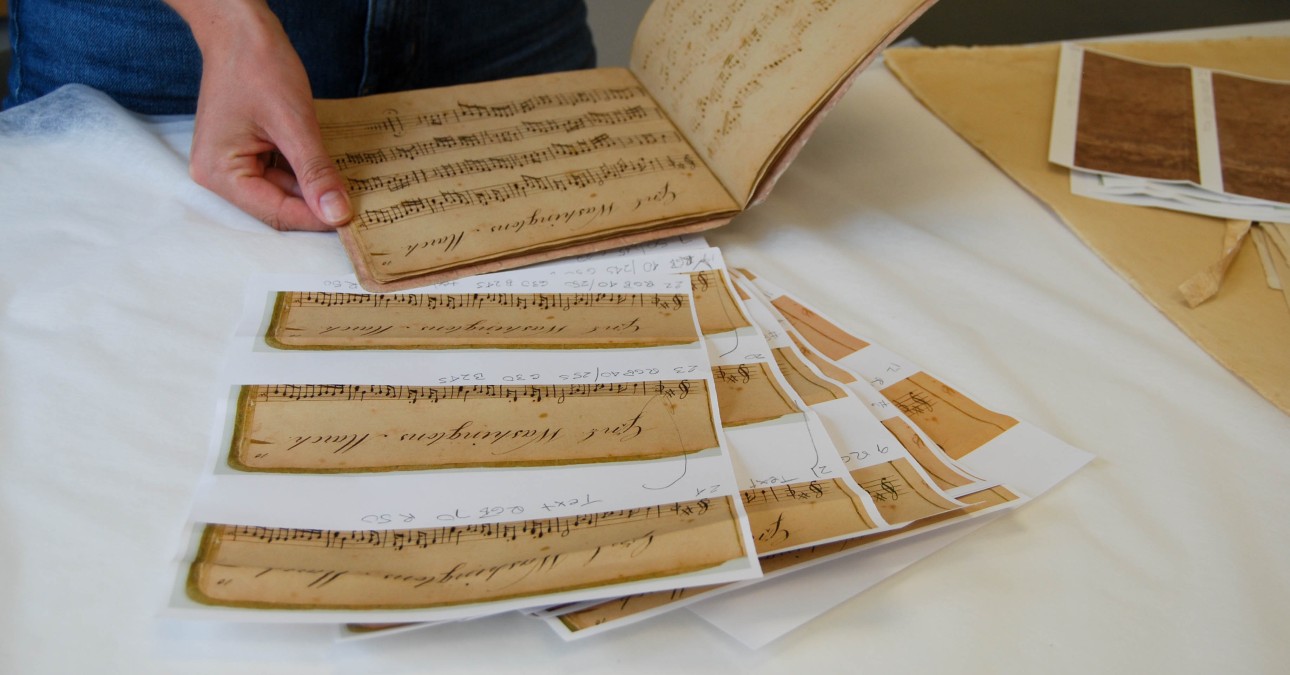
Treatment FOCUS: A Fife Music Book Facsimile
The National Museum of the United States Army is slated to open its doors in early 2020. A collaboration between the U.S. Army and the nonprofit Army Historical Foundation, the newly-designed Museum building under construction at Fort Belvoir, Virginia, will showcase objects that tell the story of over 240 years of U.S. Army history. Many objects have been brought to CCAHA in the lead-up to the opening to prepare them for exhibition.

CCAHA Conservation Intern Juliet Baines tones a page of the facsimile book to match the original
One such object is a bound pamphlet of fife music dating from 1803. The Museum had two goals for the book: first, for the original volume to be conserved and stabilized for display when the Museum opens, and second, for the creation of a facsimile for display that could be opened to reveal the two-page spread containing “George Washington’s March.” This facsimile would be safe for long term display. CCAHA Paper Conservation Intern Juliet Baines treated the pamphlet. She cleaned the leaves, avoiding the iron gall ink writing. She removed tape, mended tears and losses, and reattached the last leaf to the book block with a mulberry paper hinge and wheat starch paste.
In order to create a facsimile of the book, Baines worked with CCAHA Manager of Digital Imaging Andrew Pinkham. They performed numerous tests to determine the optimal paper for longevity, usability, and color-accuracy. After the pages were printed, Baines trimmed the facsimile leaves to match the contours of the original leaves and toned the edges with water color to mimic the aged coloration. Baines sewed the facsimile cover and leaves with acrylic-toned linen thread with the same technique used in the original. She toned and weathered the cover with beeswax, water color, and mechanical manipulation to match the original as closely as possible.
